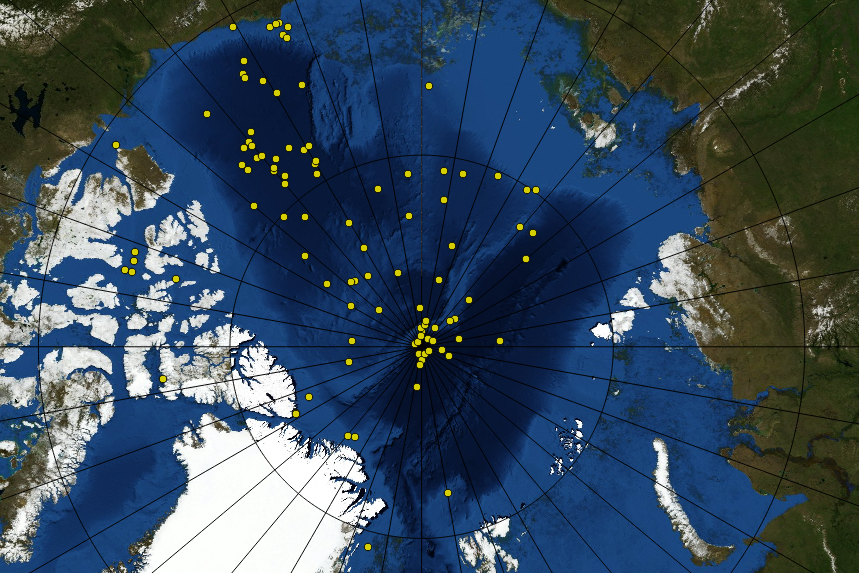The overarching goal of our work is to be a component of a sustainable Arctic observing network. This entails cooperation and collaboration with various Arctic stakeholder communities. Our deployment strategy is predicated on two principles: key location and collocation. The limited numbers of IMBs are deployed strategically to optimize the observation of changes and trends in sea ice throughout the Arctic Basin. The locations are influenced by model results and previous observations. Most IMBs have been collocated with other sensor packages observing the atmosphere and the ocean. The value of any of these individual measurement systems, including the IMB, is greatly enhanced when they are operated in a coordinated fashion. This integration is critical to developing a Sustainable Arctic Observing Network. For example, collocating IMBs with oceanic and atmospheric measurement systems provides a complete profile of atmosphere, ice and upper ocean properties. Such an integrated set of observations is needed to be able to understand the environmental changes that are occurring and to attribute the drivers of the observed sea ice loss. Data from these instruments can be used to validate and calibrate remote sensing tools, including satellite-based observations of ice thickness, snow depth measurements, and onset dates of melt and freezeup. They can also be assimilated into numerical models to provide a context for the data and to improve model results.

The deployment locations of ice mass balance buoys are mapped in Figure 1. We work with the International Arctic Buoy Program to select optimal deployment opportunities. The map shows clusters of buoy deployments in the Beaufort Sea and near the North Pole that are part of our long-term efforts. A key element of our deployment plan is to continue these deployments at the North Pole [Morison et al., 2002] and in the Beaufort Gyre (Beaufort Gyre Environmental Observatory BGEO). A team of several different investigators regularly deployed instruments at these sites including an IMB, an ice-tethered ocean profiler, an ocean flux sensor, and a meteorological station. The Beaufort Gyre is hypothesized to be a flywheel of the Arctic Ocean circulation [Proshutinsky et al., 2002] i) regulating variability of sea ice drift, thickness and concentration; ii) accumulating and releasing freshwater and heat; and iii) interacting with the Greenland Sea Gyre to promote decadal variability of the Arctic climate. Beginning in 2003, the IMBs have been deployed at the BGEO with an ice-tethered ocean profiler and an ocean flux sensor. Some deployments also included an atmospheric chemistry buoy.
We recognize the importance of international collaborations in building a Sustainable Arctic Observing Network. In the past, we worked closely with European Union scientists involved with Developing Arctic Modelling and Observing Capabilities for Long-term Environmental Studies (DAMOCLES) project. We deployed 10 IMBs as an element of the extensive DAMOCLES atmosphere-ice-ocean observing array. We are current collaborating with the Multidisciplinary drifting Observatory for the Study of Arctic Climate (MOSAiC) program to deploy ice mass balance buoys in the fall of 2019.
The eventual goal of our work is to contribute to a comprehensive, sustainable Arctic-wide network of autonomous sensor systems.